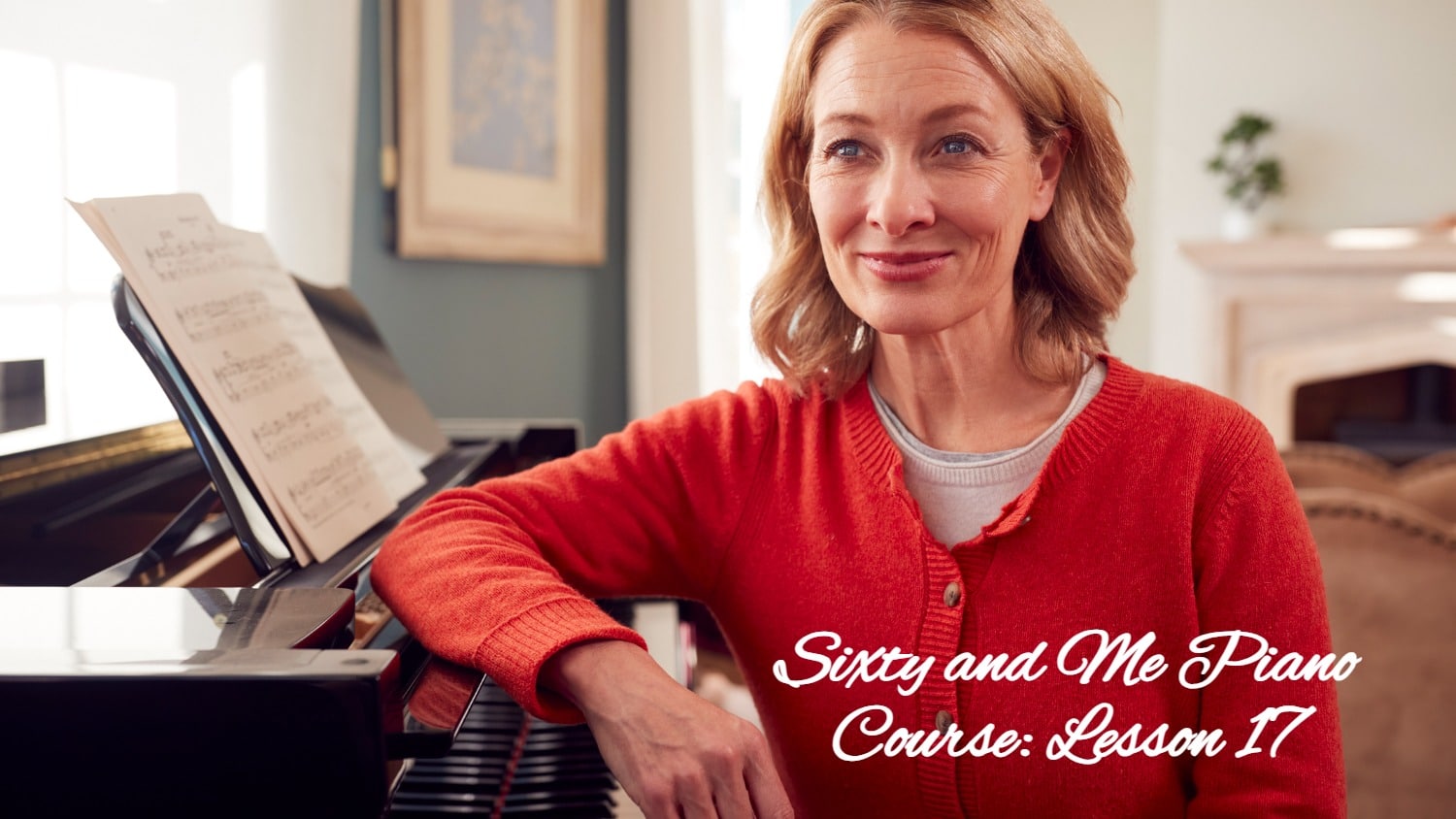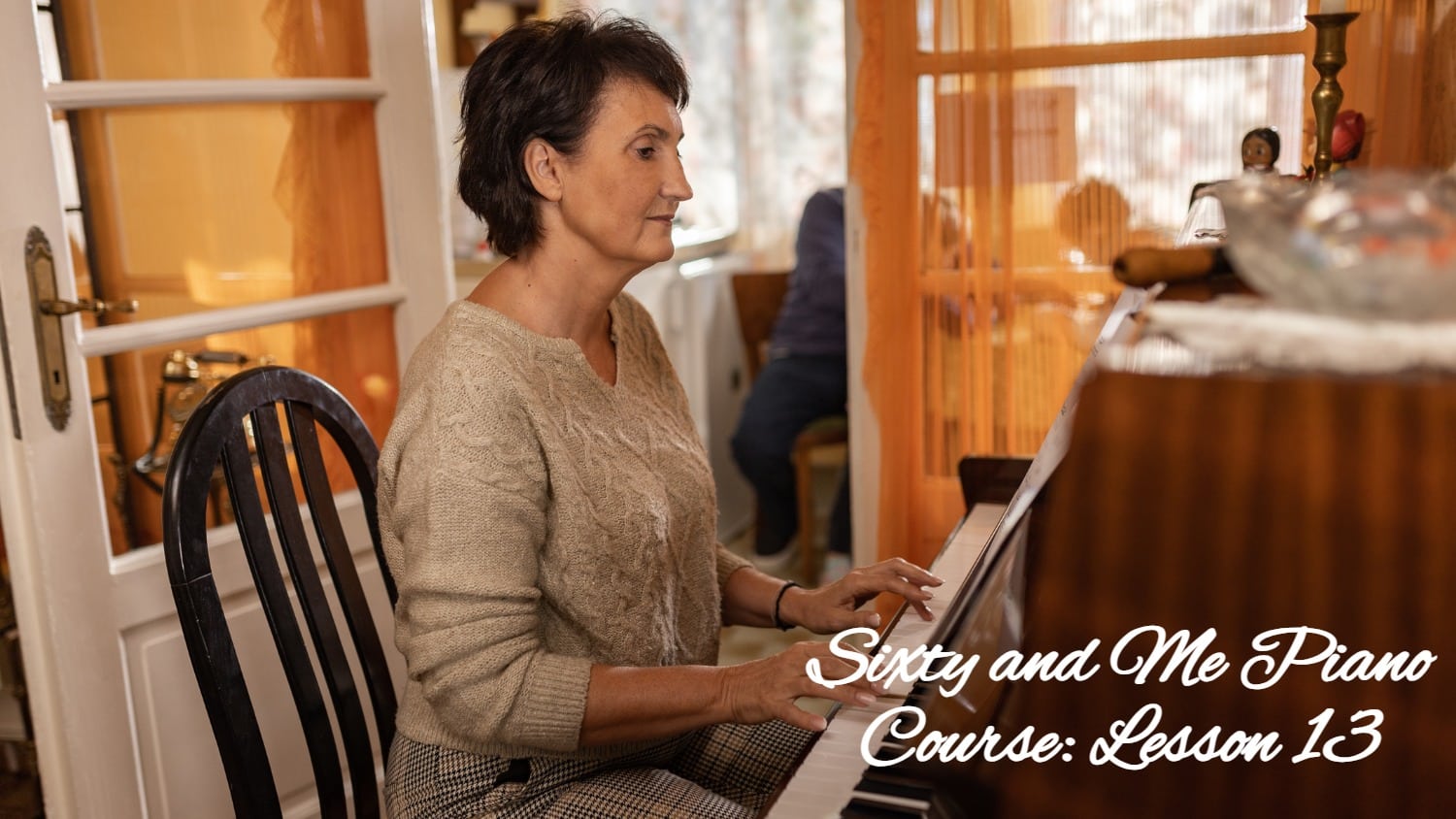
Piano Lesson 17: Elder Einstein, Punctual Postie, and Dashing Dora Teach Tempo!
Hi, Sixty and Me Friends! Welcome to Lesson 17, covering pages 56-58 in our Upper Hands Piano, BOOK 1.
So far, we have been reading notes, playing with dynamics (loudly/softly) and studying note values (how many beats to hold each type of note). Today we add TEMPO to your cache of musical magic!
Tempo markings tell us how fast or slow to play a piece. Tempo is another way we add expression to our playing; playing slowly, or at a medium walking tempo, or at a quick, lively speed definitely affects the emotion of the music, so it’s an important aspect of your playing I’m excited to introduce you to today!
[NOTE: If you are just joining us for the first time, you can find my previous Sixty and Me Free Piano Lessons on my Author page. You can join our lessons any time!]
17.1 Elder Einstein, Punctual Postie, and Dashing Dora Teach Tempo! p.57
At the bottom of p.57, you see the three characters I use to help us remember the three most common Tempo Markings. Slow moving “Elder Einstein” shows us that when we see the Largo tempo marking at the beginning of our piece, we will play very slowly.
“Punctual Postie” walks around all day and teaches us that Andante is a medium walking tempo. “Dashing Dora” tells us that Allegro means to play fast! Watch my video to hear the range of speeds for each of these Tempo markings.
As I demonstrated in the video above, you can use an old school mechanical or electronic metronome, or a digital metronome app (there are many free ones) to hear the range of speed for Largo 40-60 Beats Per Minute (BPM), Andante 70-85 BPM, and Allegro 115-156 BPM. But remember, only play as fast as you can play while maintaining a steady beat! In my opinion, Tempo markings are just a guide. Use your own judgement to decide how fast or slow you want to play your music.
17.2 Largo from the New World Symphony No. 9, by Antonín Dvořák, p.57
You might be wondering why the name of this piece is the same as its Tempo marking, Largo. That’s because many composers named the sections of their pieces with their tempos. A piece might have several sections, each with a Tempo marking as its name. For example, Dvořák’s New World Symphony (aka Symphony No. 9) has 4 sections, each called by its tempo marking. We are playing the theme from the 2nd section, called Largo, on p.57.
17.3 Sonata No. 11 by Wolfgang Amadeus Mozart, p.58
Mozart’s beautiful Piano Sonata No. 11 has 3 sections. We are playing the theme from the 1st section which is to be played at Andante (“Punctual Postie”) a medium walking tempo.
A Tool to Add Expression to Your Piano Playing
Notice at the bottom of p.58 that I suggest creating a story to go along with the music. This is a technique actors use to make their performances feel more authentic. Once you have learned the notes, rhythm, and can play at a steady tempo, imagine a scene in which this piece is the background music.
Play the piece imagining the action of the scene (perhaps an 18th century couple dancing, including ornate dresses and powdered wigs, while staring into each other’s eyes?) Use this technique whenever you play a song or piece, and your playing will be more expressive.
Musical Math, P. 56
Some students with a strong background in math talk about the “order of operations” when filling in the answers for this page. Please note that I kept it simple so that you can perform the addition, subtraction, multiplication and division from LEFT to RIGHT.
For example, for problem 13), multiply the value of the whole note (4 beats) by the dotted half note (3), then multiply that number by the half note, then divide that number by the tied dotted half notes (the tied dotted half notes = 6 beats total), then take away the value of the half rest, and add the value of a quarter rest. For all the problems on this page, simply work from LEFT to RIGHT. You can check your answers here.
Making Your Practice Space, Like Your Kitchen, a Sanctuary for Creativity
In the book Atomic Habits which I wrote about in the last post, the author, James Clear, writes about musicians designing an environment conducive to good practice habits. For example, if your keyboard is hidden away in a stuffy closet, you will be less likely to see it, and less likely to want to play. An ideal location for a keyboard would be in a room you visit all the time in an uncluttered, comfortable, appealing location in your home. I wrote about this at length in my blog post called Mise en Place.
Passion Practice!
- Exercise #3 in A-flat (review) and E-flat (new). Play each exercise 3 times: 2x Forte (loudly) then 1x Piano (softly) with each hand. Use the PENTASCALES chart at the back of the book if you are unsure of any hand positions Review Ex #3 in C, G, D, A, E, B, F# and D-flat when you can.
- Chord Calisthenics #3 – Play the major/minor/major triads in E and B, and review C, G, D and A.
- Do the Musical Math on p.56 (see the instructions above). Check your answers here.
- Review p.35-36 and any other songs in Upper Hands Piano: BOOK 1 that you enjoy playing.
Let’s Have a Conversation:
Are there things you can do to make your piano practice space more inspiring? Decluttering, adding artwork to the room, or a comfortable cushion atop your bench? Could you move your keyboard so that you see it more often? Share your ideas or inspiration with us!
Tags Piano Lessons






